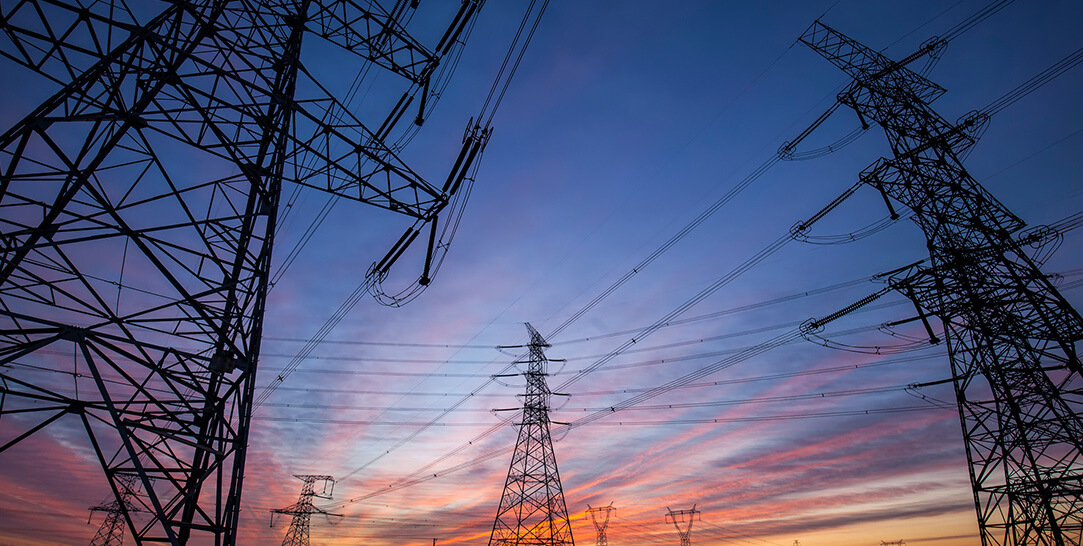Utility companies, let’s talk — it’s time to revamp your CX. A recent study released by J.D. Power shows customer satisfaction scores among utility companies are shrinking. The culprit? A reluctance to adapt to our increasingly digital world.
While utility companies continue to create new, smarter energy solutions for the future, it’s obvious their engagement channels are stuck in the past. In fact, utility companies are falling behind other industries that push the boundaries of digital innovation. Insurers and mobile wealth apps have added 10 points to their digital experience scores, while the utility industry has dropped by four points.
To prevent these scores from sinking further, utility companies must find a way to transform their digital approach. We dig into why today’s consumers are demanding an online-first experience from their utility providers and how companies can improve their digital channels.
Utilities’ Digital Comms: The Issues and Solutions
The utility industry is facing major disruptions. Climate change is a growing concern, and utilities play a key role in reducing our carbon footprint. Electricity, gas and water are increasingly expensive, and customers want to know why they’re seeing a surge in their utility bills.
And if that’s not enough, consumers are putting pressure on the utility industry to upgrade their digital channels. From banking to retail and more, customers are able to do virtually everything online. It makes sense, then, that their utilities shouldn’t be any different.
While the industry is working hard to adapt to new demands for sustainability, they’ve put other customer needs — namely, a digital-first CX — on the backburner. Consumers are unhappy, and utilities must start changing if they’re to reverse their sinking customer satisfaction scores.
What digital demands are utility companies specifically missing the marks on? How can they change this? We cover the specific issues utility companies are facing and how to fix them below.
1. Utility Companies Are Slow To Adapt
Why customers care: Digital experiences are available to consumers in virtually every industry, as we touched on before. Utilities should be no different, but the industry has yet to catch up to others, leaving a stark difference between the digital experience customers have when they shop, bank and travel — and the experience they have with their utility provider.
What to do differently: While falling behind other industries in the digital comms race certainly has its downsides, there is a silver lining. Utility companies have a unique opportunity to study what other companies are getting right, as well as what they’re doing wrong.
While other industries have been quick to move their processes online, many have swapped a customer-centric approach for one that prioritizes operational efficiency. Utility companies can learn from this. They should strive to create a digital experience that leverages the latest tech, but also keeps the customer at the center.
To do this, think about what the customer wants and needs. Make sure your site is user-friendly and free of any bugs. Include resources that your customers will find useful. You can even add a human touch by putting your messages in a video, such as National Grid did below.
This mission statement gives customers a look at the faces behind the company. In an age where we often interact behind screens, showing the people that make up your brand drives deeper connections between your brand and consumers — critical for building customer trust.
2. Customers Have Difficulty With Complex Tasks
The problem: Utility customers are dealing with complex problems. They’re concerned about today’s big problems, like climate change, and they want to know the brands they buy from care, too. This sentiment is especially popular among younger generations — over 90% Gen Z wants the brands they buy from to address social issues.
But while executives and engineers think of new ways to go green at the corporate-level, customers are struggling to find smarter, and greener, ways to use their gas, water and electric. A whopping 67% of customers report having a vague idea, at most, of where their CO2 emissions come from.
Customers are also struggling to understand their bills. As we touched on before, utility rates are climbing — leaving customers even more frustrated when they can’t understand the fees and charges that are hiking up their bills.
How to fix it: Utility companies can, and should, use the latest technology to break down information customers find confusing.
National Grid has already started. The company is using smart data to send out home energy reports that include energy-saving tips personalized to every customer, empowering them to lead a more sustainable lifestyle. It’s part of their Net Zero by 2050 plan.
Sending out customized solutions gives customers clear and relevant steps they can take to reduce their energy usage. To make the experience not only informative, but also engaging, you can put these data-driven tips in a clear and concise video, as shown below.
Data-driven solutions can also break down a customer’s bill. Just take a look at this video from American Water.
A personalized explainer video, such as this, gives every viewer valuable insight into their bill with details such as a breakdown of their charges, their due date and more.
3. Utility Companies Are Lacking In-App Comms
Why it’s an issue: Today’s customers are omnichannel. Of the platforms they use, apps are especially popular — mobile apps make up 60% of digital media time.
To stay relevant, utility companies need to meet customers where they are — and that’s in their mobile apps. Unfortunately, nearly one-third of utilities don’t have an app their customers can use, according to J.D. Power’s study.
The solution: Make apps a focus among the customer engagement channels you’re offering. Doing so can streamline one of the most important touchpoints: customer service. Think about it. Most customers only contact their utility provider when they receive their bill or when they lose their power, and need these issues fixed ASAP.
Your mobile app can offer a lot when it comes to this common point of friction. For one, it can give customers the ability to chat with customer support straight from their mobile app. Think about a storm, for instance. With in-app comms, users can notify their provider immediately when a power line is down.
Con Edison is one provider already offering this in-app feature to its customers, as shown below.
Have you used our outage map yet? It is a simple and accessible tool to report outages, get updates, and track restoration times. Visit https://t.co/fOKMgT9QLd to see how it works. #reportoutage pic.twitter.com/hZ0kxa1UeO
— Con Edison (@ConEdison) February 4, 2022
You can use your in-app comms to give your content marketing a boost, too. Remember the data-driven videos we showed before? These videos can be sent to customers in-app with ease.
Imagine receiving a video like this while using your utility provider’s mobile app. Keeping the message short and sweet prevents information overload, while personalization makes these energy-saving tips relevant and actionable. It’s a great way to add to the user experience, and make the world a bit greener.
Meet Your Utility Customers’ Digital Demands
The utility industry is facing pressure from all sides. Prices are rising, climate change concerns are growing and customers are increasingly unhappy. How can utility providers tackle all of these issues — all while offering a new, seamless digital experience?
We’re seeing some of the top utility providers already get a head start. With our Next Generation Video Platform, companies are giving customers the information they want, whether it’s bill explainers or energy saving tips, in a video that makes it easy to understand.
We’d love to show you how it works.






